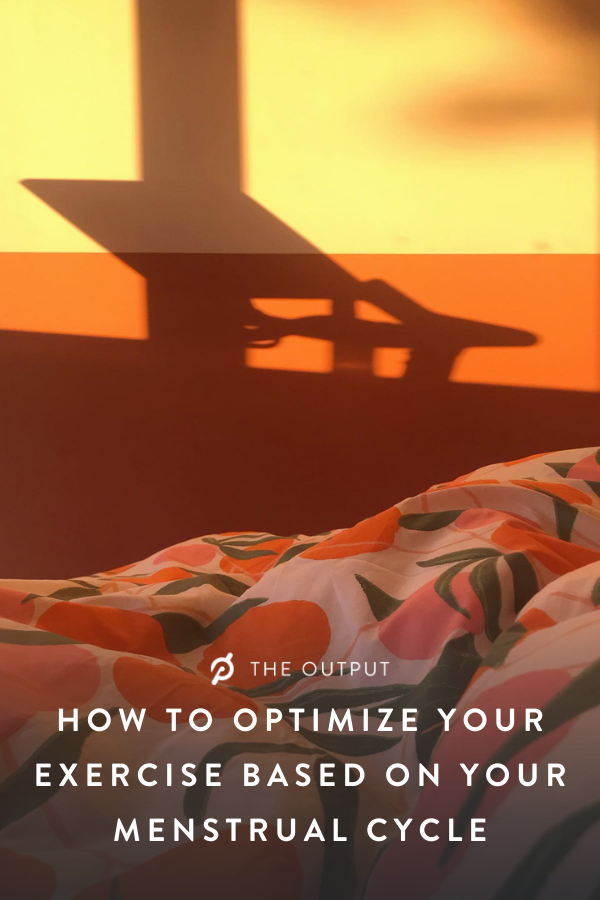Have you noticed that your monthly menstrual cycle affects the way you cycle? (And run. And lift.) You’re not alone. Hormone fluctuations can trigger changes to how you perform on the Bike, Tread or mat throughout the month. By keeping tabs on how you feel from day to day and week to week, you can adjust your exercise routine to optimize performance and feel your best.
“Throughout your menstrual cycle, you should listen to your body,” says Dr. Heather Irobunda, board-certified OB/GYN and former member of Peloton’s Health and Wellness Advisory Council. “You may notice that you enjoy more intense workouts during the first two weeks of your cycle and during ovulation. You may also notice that you have a harder time during the last two weeks and want to schedule more rest days during that part of your cycle.”
Before diving deeper into cycle phases and the workouts that best support each one, it’s worth noting that every body is different. Menstrual cycles and cycle length are affected by many variables, including age, birth control methods and whether you’ve recently had a baby. It’s possible your experience aligns with what’s described here—or it could be the total reverse. The key takeaway is to listen to your body and do what feels right for you.
The Follicular Phase
Starting on the first day of menstruation and ending at ovulation, the follicular phase spans approximately two weeks. Since the start of this phase aligns with the start of your period, you may feel tired, bloated, crampy, moody or experience headaches at the onset. In those instances, exercising might be the last thing you want to do, but it’s probably one of the best things for you. As long as your symptoms aren’t debilitating, work up the motivation to get your body moving with a 15-minute Peloton ride, run or walk. Chances are, you’ll start to feel better and will tack on another class or two as your energy levels rise.
Estrogen levels gradually increase throughout the follicular stage and research has shown that this is a good time for strength training, as bodies recover better during this time. “Research done by exercise physiologists has shown increased muscle strength when doing strength training at this time of your cycle,” says Dr. Irobunda. “During the first two weeks of your menstrual cycle, you may feel stronger during your workouts.” So grab your weights and get those reps in.
Ovulation
In a typical 28-day cycle, ovulation happens around day 14, right in the middle, and lasts for about 24 hours. In this phase, a surge of estrogen and progesterone allow an egg to be released from the ovary. (If your cycles are shorter or longer than 28 days, ovulation could be sooner or later than day 14, and it may vary from month to month.)
“There can be a burst of energy during this time, which may cause better athletic performance,” notes Dr. Irobunda. “Many see great athletic performance with high-intensity workouts.” Now’s the time to take HIIT classes, interval runs, Power Zone rides and bootcamps.
The Luteal Phase
The last two weeks of your menstrual cycle make up the luteal phase. Here, progesterone and estrogen levels rise and then fall, eventually triggering the start of your next period. This phase is when premenstrual syndrome (PMS) may rear its ugly head, bringing on bloating, breast tenderness, fatigue, food cravings, mood swings and insomnia. Your body’s going through a lot in these two weeks, so give yourself permission to take a break.
“You are more likely to feel like taking a day off in the last two weeks of your cycle because of hormonal changes,” says Dr. Irobunda. “There may be more days during this cycle that you feel tired and want to do less intense workouts.”
On days when your energy is low or you’re dealing with symptoms of PMS, Dr. Irobunda recommends adding yoga and meditation classes to your exercise routine, both of which provide mental and physical benefits. Pilates and barre, which are gentler on your body, are good options, too. And if your best remedy is a full-out sweat session with the volume cranked up, the good news is that those classes are just a few taps away too.
Wherever you’re at in your menstrual cycle, there’s a class for you on the Peloton App.

